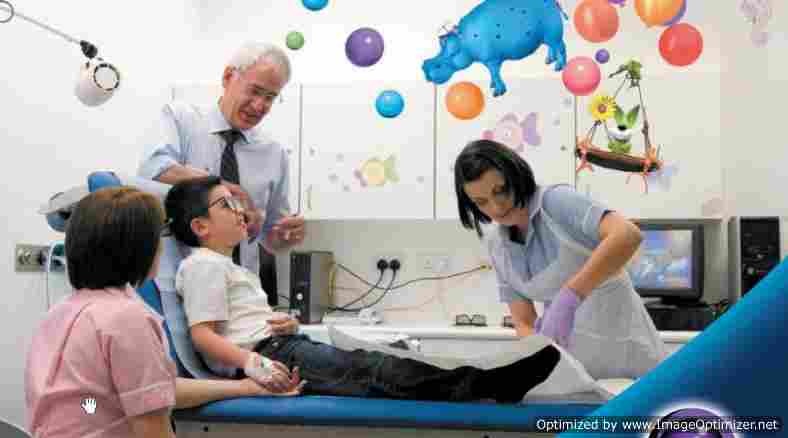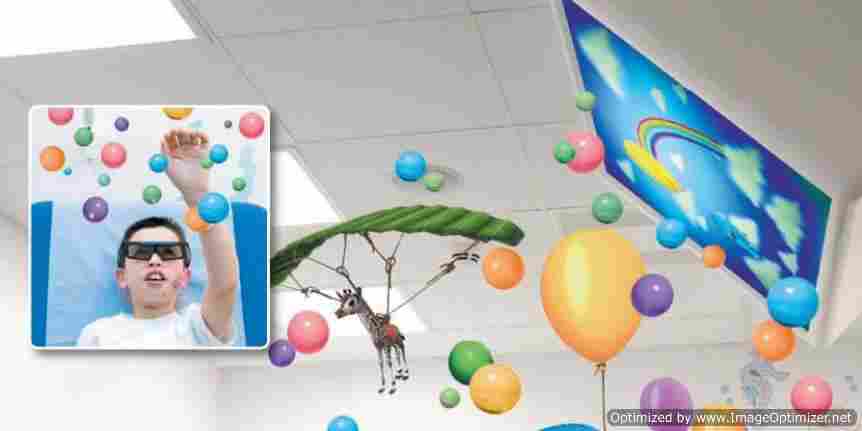Designers at Middlesbrough-based firm, Amazing Interactives, have already produced innovative systems to help revolutionise rehabilitation services within NHS trusts, but are now planning to extend the technology further. They hope that, through the use of virtual environments, children will be distracted from clinical procedures being undertaken, thus negating the need for medication.
Funded through donations from the Women's Royal Voluntary Service and the Children's Foundation, the company has worked with the Royal Victoria Infirmary (RVI) in Newcastle to explore the technology further.
The firm's creative director, Tim Dear, explained: “Four years ago we started to look at using 3D technology for the treatment of children in medicine. Previously we had created lots of interactive technologies, but to use it medically was a very interesting challenge
“The system we have created supports what we call ‘extended 3D’, where the images come out of the screen a lot further than you would see in a cinema. Children will feel they can touch them so they will be distracted. We create a 3D world to get lost in while a procedure is happening, bringing balloons and animals and other images right into the laps of the children.
“We have been working closely with the RVI and the early indications are that it is very successful.”
Kingsley Smith, chairman of Newcastle upon Tyne NHS Foundation Trust, added: “These are fantastic tools that take children’s minds away from painful treatments. They are fun and calming and something which young people can relate to and they fit right into the ethos of quality of care.”
A member of the nursing staff added: “In paediatrics you often have to do painful procedures and traditionally we use gas and air to distract and relax a child. We found that when we used this interaction we needed less gas and air and that can only be a good thing.”
As well as the potential for its use in paediatric procedures, it is thought the system could also be adapted for use among patients with mental health trauma, and to help engage dementia sufferers.
And Dear said the company was now looking to further adapt the ‘extended 3D’ concept to create new rehabilitation aids. “We are looking at how we can use the same technology in the treatment of a whole range of disabilities and defects. Currently we are working with rehabilitation specialists and they are advising on the kind of things they do. It may be useful in a situation where a patient cannot stand properly and, while they feel they are standing straight, they are actually leaning to one side. We are looking at the possibility of creating a system that would help to gauge this and show the patient how to stand correctly. That would be a world first,” he said.

Commenting on the impact this could have, Victoria Mitchinson, team leader for paediatric physiotherapy at the Great North Children's Hospital, also in Newcastle, said: “We want to be able to link this technology to current programmes. It might be that we use a virtual bike to cycle into interactive worlds similar to the way children do with Wii or PlayStation technologies. We will be taking it to a different level to help motivate and measure therapy progress.
“Children often do not understand what they are meant to do to make themselves better. From cancer, to cystic fibrosis, to head injuries, we can see the potential for this technology. We want to use as much variety as we can in our therapy and it will be a case of whatever works best for the patient.

“When dealing with older children it is often motivation that is the problem and this technology could help with that. We know paediatric physios are good at getting kids to do things they don’t think they are doing, so having another tool to help us do that is great. We will now be working closely with Amazing Interactives to further develop the system as we want the children to be able to choose the character and the design of their own virtual world.”




